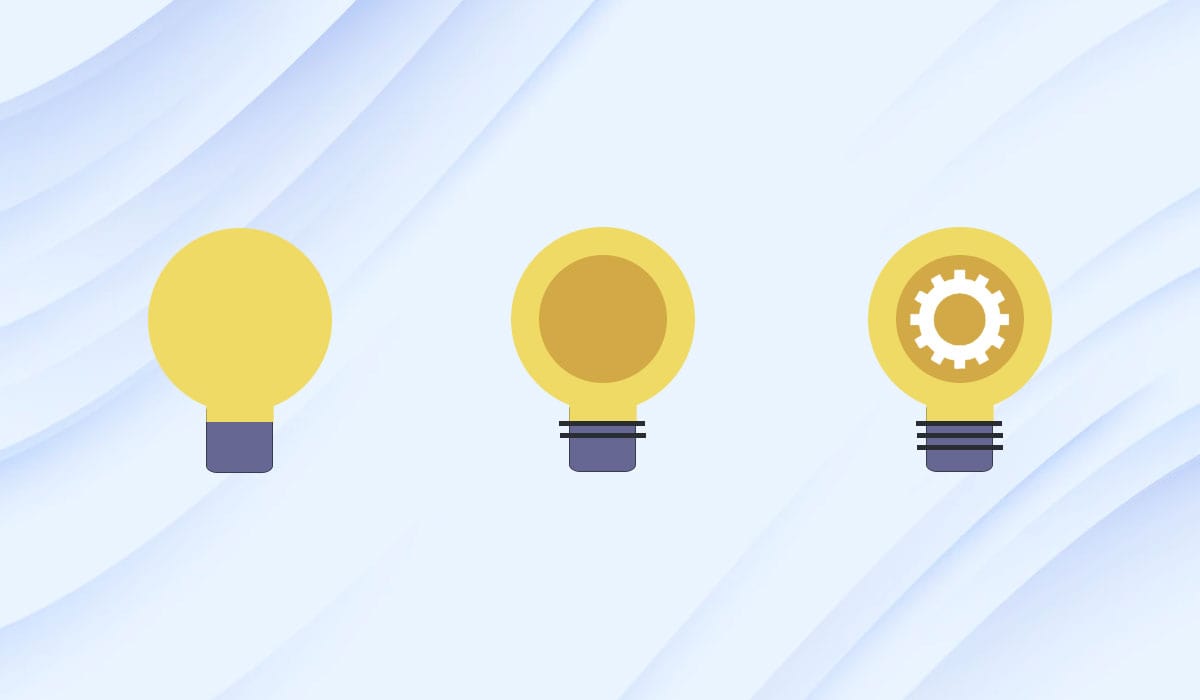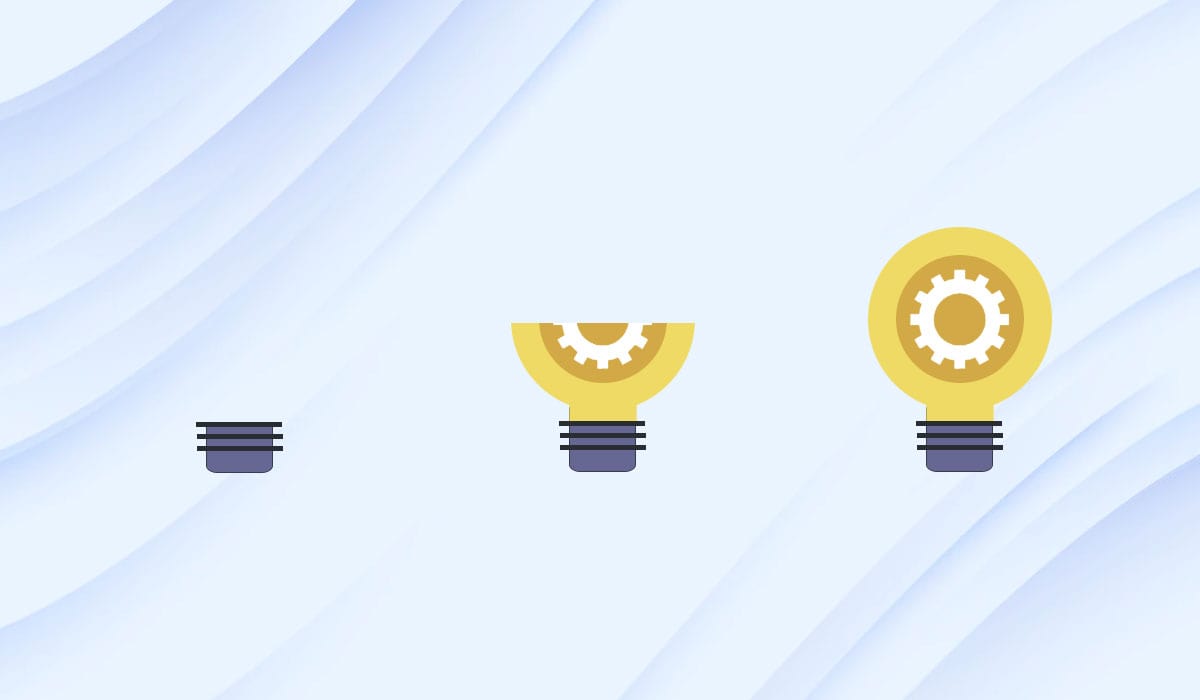Summary
The article compares two popular software development approaches — incremental (building a system piece by piece, adding functionality over time) and iterative (repeatedly refining and improving the system). It explains when each method makes sense: incremental development works well when requirements are clear and you need steady progress, while iterative development is ideal when requirements are uncertain or expected to evolve, allowing teams to learn, adjust, and gradually refine the product.
There are many different approaches, methodologies, and methods used during software development that help to get the best result. Thus, when you start a new project, it is important to decide how all the product specifications and customer requests will be met. In general, most of the methods follow an iterative or incremental development framework. Therefore, it is vital to know the difference between these two to understand which method is the better one in your particular case. So, let’s dive into the details.
Definitions to Learn About
Before comparing the methods, it’s worth mentioning that both iterative and incremental frameworks are included in the Agile methodology. To be precise, they are a part of Scrum methodology. In agile development, the overall process is divided into small and manageable parts, known as “sprints.” A product goes through these stages and has different versions at the end of each one. Every version is delivered to stakeholders in order to get feedback and make recommended adjustments. Iterative and incremental methods have the same structure, and they follow the set sprints, which is why they are often used along with any agile methodology.
Read Also Improving Product vs Improving Processes. Agile, Lean, and Lean-Agile Compared
Despite having the same basis, these methods have their own particular features, so let’s take a closer look.
Iterative Development

By following this development approach, a team creates software functions and features through several repeated cycles. These cycles are also called iterations, and, each iteration, a new version of a product is released. During these stages, the application is tested and modified according to the review. The participants are following these iterations until the final product is developed. Basically, it is possible to understand what software is about at the very first iteration, and it’s already usable, however it needs refinement.
Incremental Development

As for the incremental method, the tasks are divided between all members, and software is built in sections. Its design is created by UI/UX designers, back-end developers decide on the technologies and frameworks they will use, etc. Everyone does their part, and the complete product is shown only after all the parts are combined. Thus, it is impossible to assess the final result until each participant makes their job done. And, as a result, any feedback can be given only after all tools and features are connected together.
When to Use Which Method
Considering the variety of options, different companies go for different development methods. Some of them can use both incremental and iterative approaches, others opt for only one of them, or there are those who prefer some other methodologies. Using both of them can be helpful, but it all depends on the tasks and software requirements.
If talking about iterative development, it is usually chosen when you have an application or system that should be improved, but you are not completely sure how to do this. In this case, separating the process into iterations and getting needed review may be the perfect option. The approach is especially suitable when your project is complex and requires a high level of quality and flexibility, and all project participants want to have more certainty about further actions to get the better outcome.
Incremental development is often used when there is a clear idea of the product and its features. It means that all tasks are already defined, and there is no need to specify the details. It also can be ideal in case you don’t have a tight budget or deadline. All milestones can be easily completed, and there is no need in getting in-between feedback.
Read Also SAFe, DAD, and LeSS: Three Recipes For Projects Too Large to Handle
Pros and Cons of Iterative Development Approach
If you are not sure which option to choose for your project, it may be useful to know the advantages and disadvantages of each method to make a deliberate decision.
Thus, the key advantages of iterative method include the following:
- Frequent feedback
Each time your team delivers a working version of a product, it leads to more feedback. As a result, you are able to develop the application of a better quality and with fewer risks. It will also be easier to meet users’ needs and company’s requirements.
- Better quality
This is what literally comes in a package with the feedback you get. Unless you ignore all the recommendations and decide to make something else. When a project can be tested at each stage, it is a good chance to enhance it to a better quality.
- More flexibility
When software is developed in small parts, it encourages stakeholders to offer the implementation of some changes. It means that there are more possibilities to change tasks in the process. It may be a good opportunity if your team is ready for this.
- Less miscommunication
Most of the pros come from the ability to have reviews, and this positive aspect is not an exception. Considering that everyone is involved at the same time, you get better collaboration and understanding between the members of the team and stakeholders. Everyone is on the right track.
It is vital to pay attention to the disadvantages as well to be prepared for possible issues:
- Costly and time-consuming
Repeating the same actions over and over again can be tiresome and can lead to longer development. In this case, one needs to be ready to spend more resources.
- Defined plans are recommended
Without having one, it will be difficult to decide which feature is in high priority to be implemented and which one can be postponed. As a result, one can run into scope creep or development delays.
- Difficulties in planning
Because of the possible changes and absence of a fully defined final product at the start, it can be challenging to plan your further actions. It means that estimation of time and resources that your team may spend can be difficult to define.
Read Also Running From Avalanche or How You Can Avoid Scope Creep
Pros and Cons of Incremental Development Approach
When looking at the advantages of incremental method, it is essential to mention the following positive factors:
- Time-saving
There is a clear vision of the final product, and everyone is doing what they can to bring the best outcome at the end. It saves a lot of time, and end users get the result earlier.
- Easier management
Having all the tasks divided among the participants makes it easier to manage the entire project.
- Less expenses
Without having the need to repeat tasks, like it is done in iterative development, your company will be able to spend less resources and save some money for other projects.
- Individual testing
Each component can be tested individually, which means that there will be more chances to have software with fewer bugs or even completely bug-free.
However, the approach has its own disadvantages as well:
- A thorough description is needed
You cannot break down the whole development process into smaller sections without having a plan. That is why it is recommended to compile one according to the requirements of the stakeholders and resources of your team.
- Lack of feedback
Despite better understanding of what is required from each person, it can be difficult for some individuals to create something without having feedback. Therefore, more explanation and transparency may be needed for front-end developers, UX/UI designers, or other specialists.
- Inflexibility
If an error occurs in one of the components, it may lead to issues with other development procedures. As a result, it can increase the overall time of development, because everyone will have to check each section to make certain adjustments.
Conclusions
Software development is not an easy process, because it includes different steps to follow, methodologies to choose, development experts to hire, and many more depending on every particular project. The right course of actions is the one you go for. So, if your team is ready, your company has all the needed resources, and you know which application you want to develop, then it will be easier to decide on which of the incremental or iterative development processes to opt for.
If you have an idea in mind and want to get help from qualified and experienced specialists, please contact us, and we will be glad to assist you in your journey.